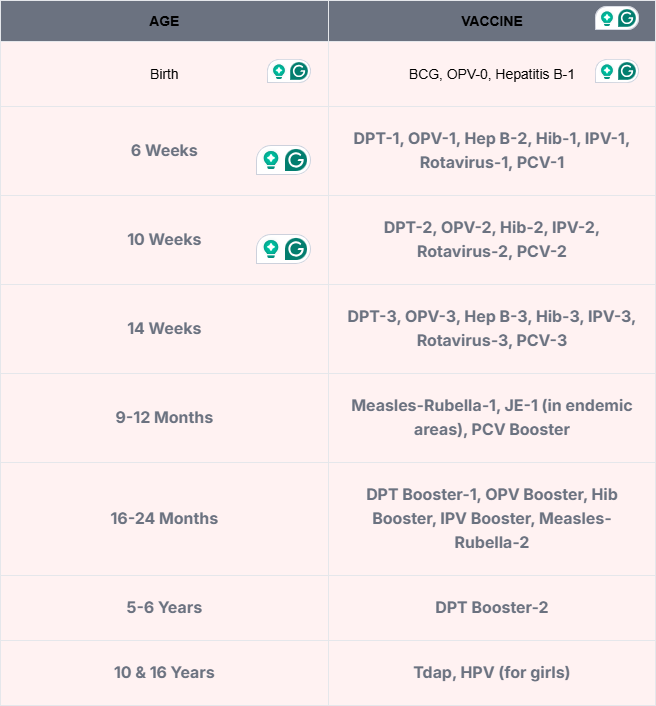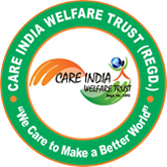Vaccinating children is a critical part of safeguarding their health and protecting communities from preventable diseases. In India, where infectious diseases like polio, measles, and tuberculosis were once widespread, immunization programs have played a transformative role in reducing illness and saving lives. Childhood vaccines, as outlined in the vaccination chart for babies in India, strengthen a child’s immune system, allowing it to fight infections effectively before they pose a serious threat.
The Government of India has implemented robust immunization initiatives, such as the Universal Immunization Programme (UIP), which offers free vaccines against a range of diseases. This has significantly reduced child mortality and improved public health outcomes, especially in underserved rural and urban areas. The baby vaccination chart and immunization schedule 2024 India serve as essential tools for parents to track when and which vaccines should be given to ensure complete protection.
However, for vaccines to be effective, they must be administered on schedule, as delays or missed doses can leave a child vulnerable during critical growth stages. Additionally, timely vaccination helps prevent the spread of infections within communities, creating herd immunity that protects even those who cannot be vaccinated.
This guide is designed to help Indian parents navigate the national vaccination schedule, understand the importance of each vaccine, and know what to expect during the immunization process. A proactive approach ensures children grow up healthy, protected, and ready to thrive.
Introduction: Why Child Vaccination Matters
Vaccination is one of the most effective and safest ways to protect children from serious and potentially life-threatening diseases. From birth to adolescence, a child’s immune system is still developing and remains vulnerable to infections. Immunization works as a preventive shield that not only guards children against deadly diseases like polio, measles, diphtheria, and hepatitis but also helps reduce the overall disease burden in society. The vaccination chart for kids is a crucial reference for parents to ensure timely and complete immunization.
In India, where child mortality and infectious diseases are significant public health concerns, timely vaccination can be life-saving. Government programs like the Universal Immunization Programme (UIP) have made free vaccines accessible across the country, significantly lowering child mortality rates over the decades. Parents can refer to the vaccination chart for babies in India to track the schedule of vaccines that should be administered at different stages of a child's growth.
Additionally, for parents looking to understand the costs involved, the 6-month baby vaccine price varies depending on the specific vaccine and whether it is part of the UIP or an optional vaccine. Vaccines don’t just protect individual children—they contribute to herd immunity, which helps protect those who can’t be vaccinated due to medical reasons, like allergies or compromised immunity. When the majority of a population is immunized, it limits the spread of disease and prevents outbreaks.
However, despite the availability of vaccines, misinformation, myths, and lack of awareness often lead to vaccine hesitancy among parents. This hesitation can have dangerous consequences, not only for the child but also for public health.
In this blog, we aim to provide parents in India with a complete understanding of the child vaccination schedule, what to expect, and why it's essential. A well-informed parent can make proactive decisions that ensure their child gets the best possible start in life, protected and healthy.
Understanding Vaccines: How They Protect Your Child
Vaccines are powerful tools that train your child’s immune system to recognize and fight harmful germs without causing illness. When a vaccine is given, it introduces a harmless part of the virus or bacteria—such as a weakened, inactivated, or fragment of the germ—into the body. This stimulates the immune system to respond by producing antibodies, which are special proteins that can detect and destroy the actual virus or bacteria if the child is exposed in the future. This process is known as immunization, and it helps build long-term resistance against specific diseases without your child having to suffer from them first.
For example, vaccines can protect against diseases like measles, polio, hepatitis, and tetanus, which can otherwise cause serious complications or even death. In India, child vaccination is an essential part of public health, and government initiatives like the Anganwadi vaccination chart help ensure that all children receive the vaccines they need at the appropriate age.
If you are considering vaccinations at a private hospital, it's important to note that the 6-month baby vaccination cost in private hospital may vary depending on the vaccine and the facility. These vaccines are generally part of the recommended schedule but may not be included in government-funded programs.
Additionally, vaccines in India can be categorized into live vaccines, which contain a weakened form of the germ. These include vaccines like those for measles, mumps, rubella (MMR), and chickenpox. The live vaccine list in India is essential for parents to understand as it helps determine which vaccines need to be administered at specific times to ensure effective immunity.
Vaccines not only protect your child but also help reduce the spread of infections in the community. When most children are vaccinated, it becomes harder for diseases to spread, creating what is called herd immunity. This protects vulnerable individuals, such as newborns or those with weakened immune systems.
By following the recommended vaccination schedule, parents can give their children the best defense against life-threatening diseases and ensure a healthier future.
Government Immunization Programs in India
India's Universal Immunization Programme (UIP), launched in 1985, is one of the largest public health initiatives globally, aiming to protect children from vaccine-preventable diseases. The UIP provides free vaccination across the country, targeting 12 deadly diseases, including tuberculosis (TB), tetanus, diphtheria, pertussis (whooping cough), polio, measles, mumps, rubella, and more. This program is a cornerstone of India’s healthcare system, especially for children under the age of 5, and has drastically reduced the incidence of several diseases over the years.
The vaccines are administered through a network of health centers, ensuring accessibility to even the most remote regions. The program's success lies in its nationwide coverage, reaching millions of children annually. Despite this, India still faces challenges in terms of geographic and socio-economic disparities in vaccine access.
In response to these challenges, initiatives like Mission Indradhanush, launched in 2014, focus on boosting immunization coverage in underserved areas, including rural and tribal regions. The mission aims to vaccinate every child under 2 and all pregnant women, with a special emphasis on immunizing children in hard-to-reach areas. These programs are vital for achieving herd immunity, preventing outbreaks, and ensuring a healthier future for the country’s children.
Complete Vaccination Schedule for Children (Birth to 16 Years)
Here’s a simplified version of the recommended immunization schedule in India as per the Ministry of Health and Family Welfare:

Note: This table includes both government-provided and optional vaccines. Parents should consult their pediatrician for personalized guidance.
Optional vs. Mandatory Vaccines: What’s the Difference?
Mandatory and optional vaccines serve different purposes in protecting children's health. Mandatory vaccines are those that are required by the government for all children, and they are provided for free under the Universal Immunization Programme (UIP). These vaccines protect against serious diseases like polio, measles, and tuberculosis. On the other hand, optional vaccines are not compulsory and are usually recommended based on specific factors such as the child’s health condition, travel plans, or increased risk. Vaccines like chickenpox, influenza, and HPV fall into this category. While optional vaccines provide extra protection, they are not provided free by the government and are usually paid for by parents.
Key Points:
- Mandatory Vaccines:
- Required for all children.
- Provided for free by the government.
- Protect against serious diseases like polio, measles, and TB.
- Part of the Universal Immunization Programme (UIP).
- Required for all children.
- Optional Vaccines:
- Not required by law.
- Recommended based on health, travel, or risk factors.
- Protect against diseases like chickenpox, influenza, and HPV.
- Not free; parents usually have to pay for them.
- Not required by law.
Common Myths and Misconceptions About Vaccines
Many parents hesitate due to misinformation, especially online. Some common myths include:
- “Vaccines cause autism” – This has been debunked by multiple studies.
- “Natural immunity is better.” While natural infection may create immunity, it comes at a high risk. Vaccines offer protection without the danger.
- “Too many vaccines overload the immune system.” – A child’s immune system can handle far more than what vaccines introduce.
Educating yourself with credible sources is key to overcoming vaccine hesitancy.
What to Expect During and After Vaccination
Vaccination is usually quick and safe. Here's what you can expect:
- Before: Keep your child calm. Feed them, but avoid stress or fever.
- During: Mild discomfort or crying is normal.
- After: Some children experience mild fever, swelling, or fussiness—these are temporary and can be managed with doctor-advised care.
Always stay for 15–30 minutes post-vaccination to monitor for any rare allergic reactions.
Keeping Track: How to Maintain a Child’s Vaccination Record
Maintaining an up-to-date vaccination record is crucial. Here’s how:
- Use a vaccination card provided by your doctor or health center.
- Download apps like CoWIN, Arogya Setu, or Digital Health ID to track doses.
- Set reminders on your phone or calendar for upcoming vaccines.
Keeping a digital and physical copy ensures your child never misses a dose.
Why Timely Vaccination is Critical
Delaying or skipping vaccines can leave your child vulnerable during key developmental stages. Timely immunization:
- Ensures maximum protection
- Prevents disease outbreaks
- Keeps community transmission low
- Helps in school admissions and travel
A missed dose doesn’t mean starting over, but it’s important to catch up quickly with medical advice.
Conclusion: A Healthy Start Begins with Immunization
Vaccinating your child is one of the most important steps in ensuring their health and well-being. It’s not just a short-term decision but a lifelong investment that keeps your child protected from serious diseases. In India, there are various vaccination charts that help parents follow the proper immunization schedule. The Anganwadi vaccine list is a government-provided schedule that outlines the vaccines children should receive, especially in rural and underserved areas.
The baby vaccination chart in govt hospital is a guide that ensures your child receives the right vaccines at the right time, according to the national immunization plan. For those using government services, the government baby vaccination chart helps parents keep track of all mandatory vaccines, making it easier to follow the immunization schedule.
In some cases, parents may choose private healthcare options. In such cases, the baby vaccination cost in private hospital may be higher due to additional fees, but they often provide the convenience of flexible scheduling. On the other hand, the baby vaccination cost in govt hospital is typically covered by the government, ensuring that all children, regardless of income, have access to essential vaccines.
Following these charts ensures your child grows up healthy, safe from preventable diseases, and contributes to a community with herd immunity, making everyone safer.
Stay updated. Stay protected. Immunize today for a healthier tomorrow.

